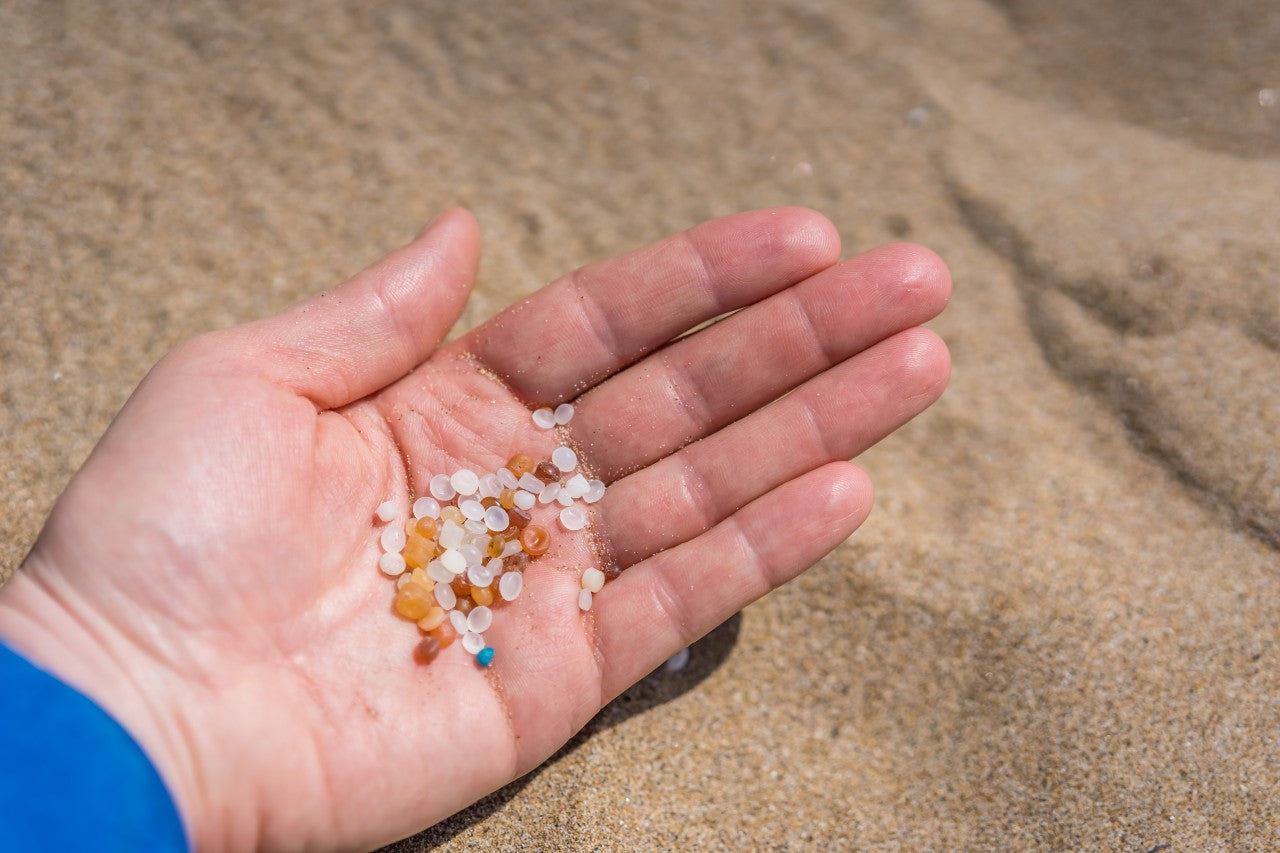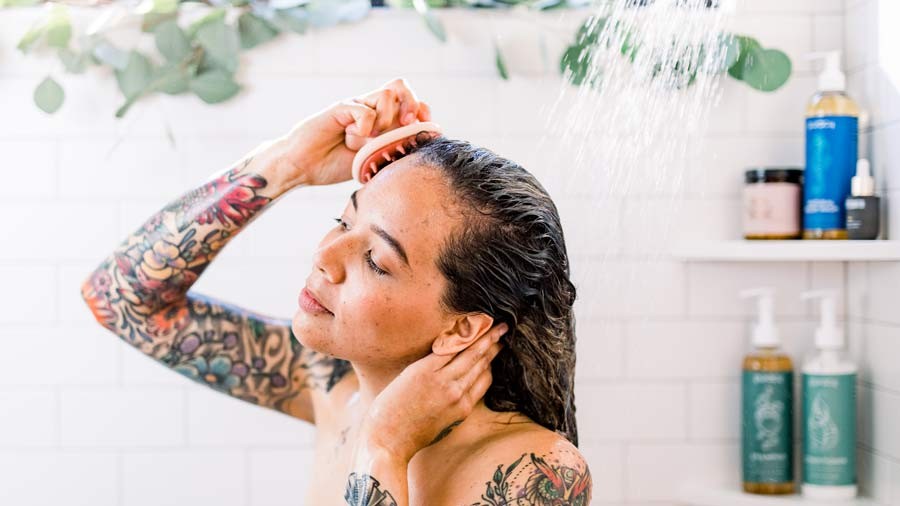
Microbeads and the Environment: How To Ensure an Eco-Friendly Bath Routine
If you're conscious about making sure daily routines positively impact the environment, you may have heard about the dangers of microbeads. It’s important to do research on personal care products to ensure they are effective and eco-friendly, but it may not always be obvious that a soap or cream contains microbeads.
Don’t know where to start when it comes to banning microbeads from your home? We’ve got you covered. To help you protect the environment from microbeads, here is a guide to identifying them in products, as well as natural alternatives that are just (if not more) effective.
What are Microbeads?

Microbeads, as their name implies, are tiny. 5mm or less, to be exact. They are often used as an exfoliant in personal hygiene products, such as face cleansers, sunscreen, body wash, and even some cosmetics. When used in lotions or creams, microbeads can create a silky texture and convenient spreadability. In some products, they simply add visual appeal and smoothness.
These microplastics take a toll on the environment when they're washed down the drain, undetected and unfiltered by sewage treatment plants. From there, they pollute bodies of water and harm local wildlife.
What are Microbeads Made Of?

These plastics may be small, but their impact on the environment is large due to the ingredients that they contain. Take a closer look at what microplastics unleash on the environment if we are not conscious of their use.
Polyethylene

Microbeads are made of polyethylene, the most commonly produced plastic in the world. This ingredient can also be found in plastic bags, bottles, and other objects that commonly make up plastic waste. Since polyethylene is usually made from petroleum or natural gas, it can have a negative impact on the environment when not recycled. Not biodegradable, polyethylene accumulates in landfills and bodies of water.
Polypropylene

Another common ingredient in plastic, polypropylene is more rugged and resistant than polyethylene. Though it can be recycled, a recent study noted that only about 1% of all polypropylene is actually recycled.
How are Microbeads Dangerous to the Environment?

Microbeads add to plastic pollution in bodies of water, as well as pose threats to the fish and animals in those habitats. Learn more about the different ways these small plastics add up to bigger environmental problems.
Water Pollution

Since microbeads are often not filtered by some wastewater treatment systems, they end up polluting oceans, ponds, lakes, and rivers. According to the Environmental Science & Technology Journal, about 808 trillion microbeads are washed down the drain each day. From there, they can also settle into land and dirt around bodies of water and end up in fertilizer, thus continuing the cycle.
Danger to Wildlife

Not only are microbeads harmful to the land, but they can also damage local wildlife and marine life. They can absorb toxins and potentially transfer up food chains, affecting multiple species and animals. That’s why it’s so important to carefully research what goes into each cleaning product, whether it’s for your own body or even for your pets.
Once microbeads settle into bodies of water or dirt, they can also be ingested by everything including marine worms and fish. This can then go on to affect the species population, stymie reproduction, and have repercussions throughout the ecosystem.
National and Worldwide Initiatives Against Microbeads

There has been an ongoing effort both nationally and worldwide to take a stand against microbeads and their damage to the environment. Learn more about these initiatives to think about how you can make your own impact in your household.
Microbead-Free Waters Act of 2015

This law passed by US Congress in 2015 bans microbeads to be added in beauty and health products, most commonly found in facial exfoliants and toothpaste. Following the passing of this law, companies were required to stop using microbeads in their products.
Previously states like Illinois and California, banned microbeads and required products to be reformulated if they do contain microbeads. Support for the law came from both parties, as it is understood that we all have to do our part to ensure our waters –and those that inhabit it– are safe from microplastics.
International Bans on Microbeads

The Netherlands was the first country to legally ban microplastics in cosmetic products, and since then, countries like Australia, Canda, the UK, and more have followed their example, initiating manufacturing and sales bans on all products that contain microplastics.
With more countries recognizing the dangers of microplastics to the environment, their legal action has further encouraged large companies to cease using microbeads in their products.
Beat the Microbead Campaign

Two Dutch NGOs created an app to help consumers identify products that contain microplastics. People simply had to scan a barcode to see if a product had microplastics. In just one year, the app's popularity spread to other countries, and it has convinced large multinationals to reconsider their use of microplastics in their products.
How Do I Know if Microbeads are in My Products?

The first step to ensuring these harmful beads aren’t in your home: awareness. Here are a few steps to making sure a product is free of microbeads and any harmful ingredients commonly associated with microplastics.
Check the Ingredients

Read the list of ingredients in a product carefully to make sure it does not contain common microplastic components, such as polyethylene, polyethylene terephthalate, and nylon. Pay close attention if the product is old, as it may have been manufactured before a country’s ban on microbeads took place. If you're still not sure, you can also try contacting the manufacturer directly or on social media to ensure the product is free of microplastics.
Want to make sure the products in your home are safe for everyone? Don’t forget to save our Guide to Potentially Harmful Chemicals to look out for in your household products.
Check Online Resources

You can also look up specific products using the database and app, Beat the Microbead. Simply scan a cosmetic or personal care product, and you'll have access to all its ingredients, formulas, and manufacture information.
The app and database is aware of over 500 ingredients commonly used in cosmetic products, as well as 100 "skeptical microplastic" ingredients. Download this app today to ensure you always know which products are free of microplastics.
Eco-Friendly Alternatives to Microbeads

Luckily, you don’t have to search too hard to find environmentally friendly alternatives to microplastics when it comes to cosmetic and personal care products. Here are a few go-to natural and biodegradable alternatives you can easily find at your local store or supermarket.
Natural Exfoliants

Microbeads are most commonly employed in products as an exfoliant. Instead, you can look for natural exfoliants such as oatmeal, apricot pits, sea salt, or coconut husks. These ingredients have no environmental impact when they are washed down the drain, as they will either decompose or be filtered out. Thus, you can use them happily knowing they won't harm the environment!
Alternative Formulas

According to a study by the journal Nature Sustainability, scientists have identified silica as the best alternative to microplastics when it comes to specific ingredients. This abundant, non-toxic substance naturally occurs within the Earth, and most importantly, it doesn't pose any risk to marine life.
Other alternatives include salt and pumice, almond shells, oats, and pearls. These ingredients also have relatively low environmental impacts, from their extraction to manufacture to their end use and disposal. Scientists also take into account the amount of energy processing they use to be manufactured into products, taking care to choose alternatives that do not create greenhouse gasses or use up land or water.
Puracy Products are Free From Microbeads

At Puracy, we're proud of our efforts to move our planet towards a plastic-free future. All of our natural personal care products, from our shampoos and conditioners to our body wash and scalp scrub, are formulated with real, plant-based ingredients by a team of scientists.
You’ll never find microbeads, abrasives, sulfates, parabens, or harsh chemicals in any of our products. When it comes to eco-friendly, natural products, you can always take a closer look at what natural means to us. Want to join us on our eco-friendly mission? It’s never too late to do your own part by making your household free of microbeads and microplastics!


























